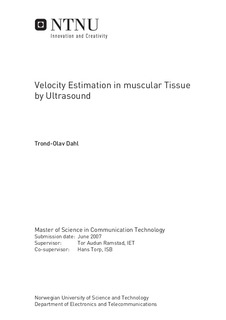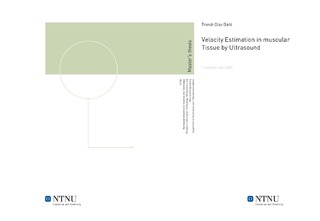| dc.description.abstract | When estimating tissue velocities, the conventional autocorrelation method (AM) is only biased if the demodulation frequency is correctly estimated. While AM assumes the received centre frequency to be constant, the modified autocorrelation method (MAM) estimates the received centre frequency continuously from pulse to pulse. Although MAM has shown superior performance in simulation environments, it fails to show consistently better performance compared to AM when applied to experimental data. In order to investigate this lack of consistency, a model for simulation of signal from moving tissue was developed, including realistic aspects such as thermal noise, signal from clutter and aliasing. The simulation model was adapted using experimental tissue data and parameters from a true acquisition system. A 1st order FIR filter was applied for clutter rejection prior to velocity estimation. The investigations using simulation data shown faster performance degradation of MAM compared to AM when the amount of signal from clutter or thermal noise were increased independently. For clutter signal mimicking acoustic noise from reverberations, MAM went from significantly better under low-noise conditions to approaching AM performance when the signal-to-clutter ratio became lower than 10 dB. Analogously, MAM approached AM performance when the signal-to-noise ratio was lower than 15 dB. Velocity estimation of experimental data shown MAM's robustness to frequency dependent attenuation by means of frequency compensation, while AM suffered from bias effects due to erroneously estimated demodulation frequency. The frequency compensation did, however, not succeed to approve lower estimation variance in MAM compared to AM. Statistical analysis based on expected values from simulations, demonstrated correlation between the estimation error in AM and MAM. | nb_NO |

